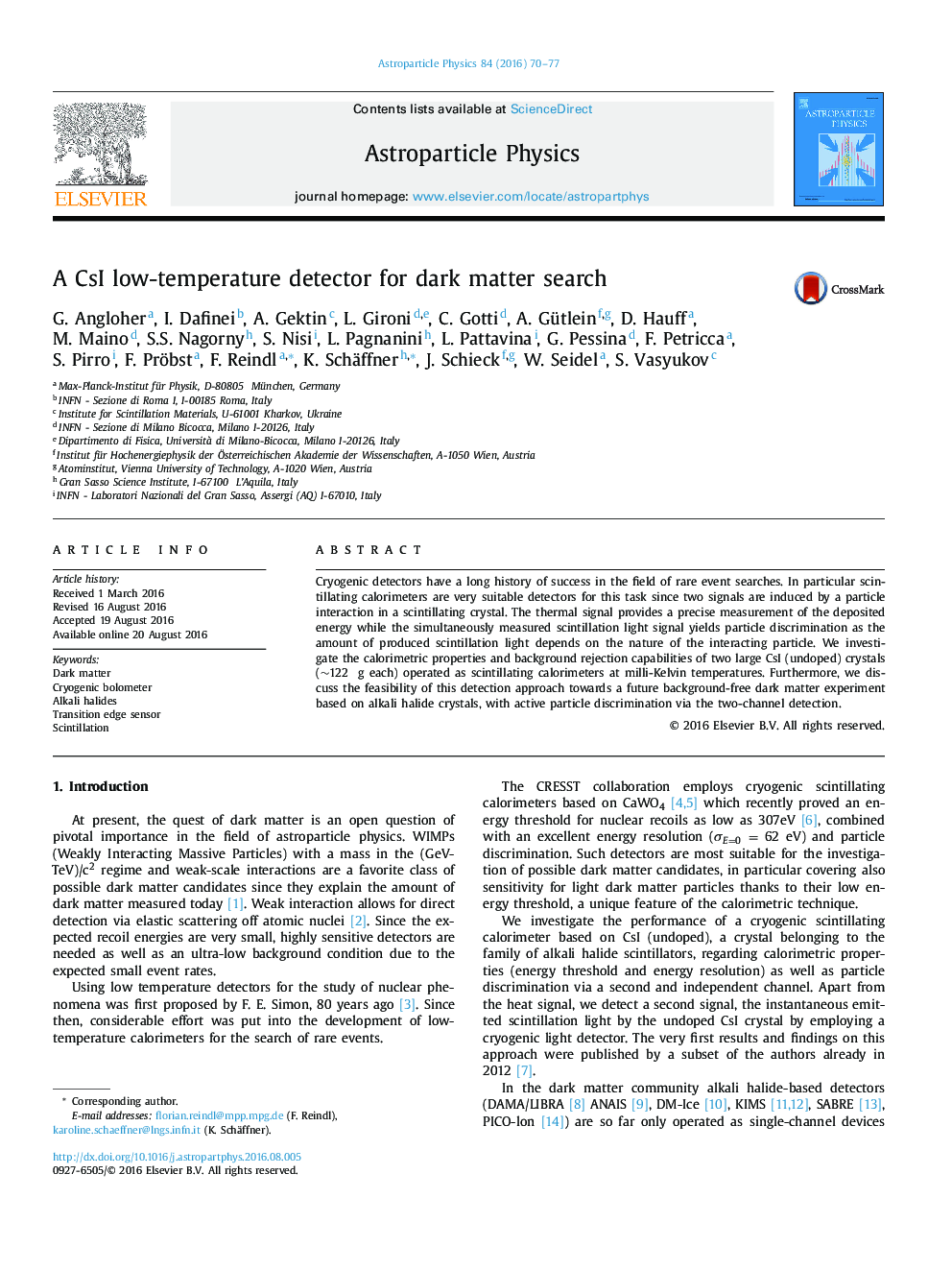| Article ID | Journal | Published Year | Pages | File Type |
|---|---|---|---|---|
| 1770411 | Astroparticle Physics | 2016 | 8 Pages |
Abstract
Cryogenic detectors have a long history of success in the field of rare event searches. In particular scintillating calorimeters are very suitable detectors for this task since two signals are induced by a particle interaction in a scintillating crystal. The thermal signal provides a precise measurement of the deposited energy while the simultaneously measured scintillation light signal yields particle discrimination as the amount of produced scintillation light depends on the nature of the interacting particle. We investigate the calorimetric properties and background rejection capabilities of two large CsI (undoped) crystals (â¼122Â g each) operated as scintillating calorimeters at milli-Kelvin temperatures. Furthermore, we discuss the feasibility of this detection approach towards a future background-free dark matter experiment based on alkali halide crystals, with active particle discrimination via the two-channel detection.
Related Topics
Physical Sciences and Engineering
Physics and Astronomy
Astronomy and Astrophysics
Authors
G. Angloher, I. Dafinei, A. Gektin, L. Gironi, C. Gotti, A. Gütlein, D. Hauff, M. Maino, S.S. Nagorny, S. Nisi, L. Pagnanini, L. Pattavina, G. Pessina, F. Petricca, S. Pirro, F. Pröbst, F. Reindl, K. Schäffner, S. Vasyukov,
